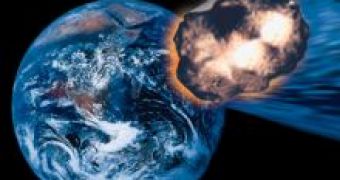All car drivers are faced with the problem of deciding which is the best route for going from point A to point B. apparently, spaceship drivers also have the same problem. The experts from the European Space Agency have met yesterday to discuss how to find the most efficient path for a spacecraft.
Space missions are constrained by certain factors such as the thrust of the rocket used to launch the spacecraft, the celestial object you want to reach and the time at which you want to get there. In other words, you want to get to a certain place as fast as possible without running out of fuel on the way. Finding out the best trajectory often proves a very difficult task.
"Ask ten engineers for the best orbit for a particular spacecraft and you'll get ten different ideas," says Dr. Dario Izzo, a researcher on mission analysis in the Advanced Concepts Team at ESA's European Space and Technology Research Centre (ESTEC) in the Netherlands. Each one of these missions will be the best for a certain reason, so the question becomes: what's the best of the best? One of the proposed trajectories or another that no-one has thought of?
To compare and contrast different techniques, ESA's Advanced Concepts Team launched a competition. They issued a challenge to space engineers across the world to find an intercept trajectory that delivered as much energy as possible to the asteroid 2001 TW229. The asteroid does not pose a threat to Earth but it is a good punching bag for training engineers to deal with a possible real threat. The key to such a mission would be to deliver the largest push possible, in time.
Twelve teams, from the US, China, Russia and Europe submitted their respective best solution. Izzo's job was to rank the proposals according to how much energy each mission could impart to the asteroid. "The inspiration for this competition was asteroid deflection, a problem we have been working on quite thoroughly" says Izzo.
The top ranked trajectory was discovered by a team from the United States' Jet Propulsion Laboratory and was closely followed by two Spanish teams. The winning solution was a flipper-like trajectory involving seven planetary flybys, mostly of the Earth but also including Venus, Jupiter and Saturn.
The teams have now met in Netherlands to discuss their individual approaches to the problem. "The response to the competition was excellent. At the meeting we will discuss the different methods used and identify the ones that have proven the most promising," says Izzo.
In fact, the response to the competition was so good that the Advanced Concepts Team also hope to run future competitions, to further stimulate research in the exciting field of mission analysis.
Image credit: Alan Gilliland

 14 DAY TRIAL //
14 DAY TRIAL //